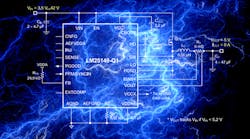Sakkmesterke, Dreamstime.com
Members Only Content
How to Get Superior Efficiency While Overcoming EMI Challenges (.PDF Download)
June 1, 2021
Electronic systems in industrial, automotive, and personal-computing applications are becoming increasingly dense and interconnected. To improve the functionality of these systems, diverse circuits are packed in close proximity. These circuits using radio-frequency (RF) chipsets, microprocessors, voltage regulators, and integrated-circuit (IC) chips all emit electromagnetic radiation.
Electromagnetic interference (EMI) is electrical noise that’s uncontained and propagated over a wide range of frequencies. It can be generated by sparking on motor brushes, machines (like welding equipment), power-circuit switches, activation of inductive and resistive loads, and more.
Comments
Comments
